产品号 #100-1096_C
Cell culture medium kit for robust generation of midbrain neural organoids from human pluripotent stem cells.
Cell culture medium kit for robust generation of midbrain neural organoids from human pluripotent stem cells.

Rinsing solution for cultureware to prevent cell adhesion
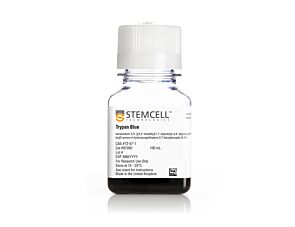
Reagent for counting viable mammalian cells
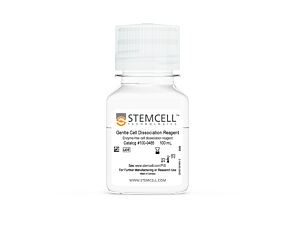
cGMP, enzyme-free cell dissociation reagent
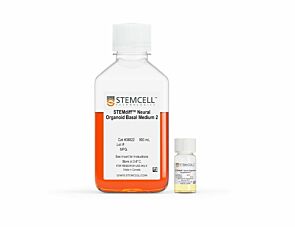
Cell culture medium kit for long-term maintenance and maturation of patterned neural organoids
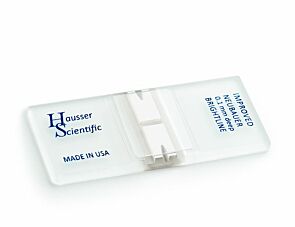
Counting chamber with 2 cover glasses
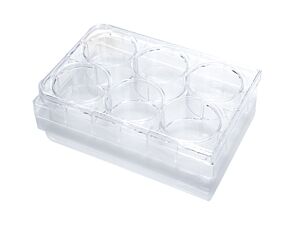
Sterile, flat-bottom plate, with ultra-low adherent surface for suspension cultures, with lid; 6-well format
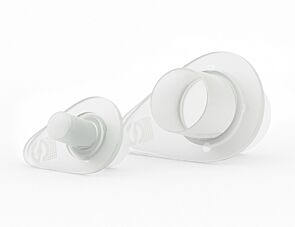
Reversible strainer for filtration of single cells and isolation of cellular aggregates, including embryoid bodies and spheroids
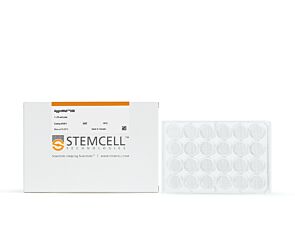
Microwell culture plates for easy and reproducible production of embryoid bodies and spheroids

Dulbecco's Modified Eagle's Medium/Nutrient Ham's Mixture F-12 (DMEM/F-12) with 15 mM HEPES buffer
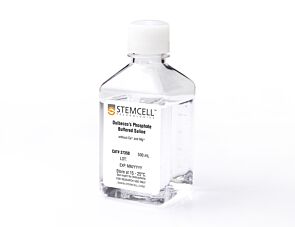
Dulbecco’s phosphate-buffered saline without calcium and magnesium
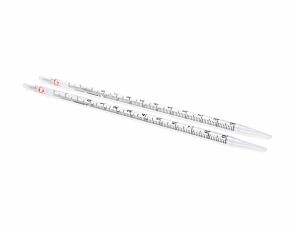
Sterile polystyrene pipettes for cell culture
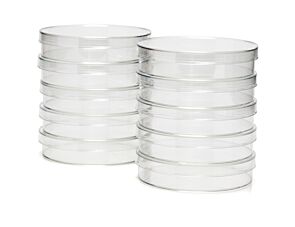
Sterile, flat-bottom, clear polystyrene non-treated dish with lid; 35, 60, or 100 mm formats
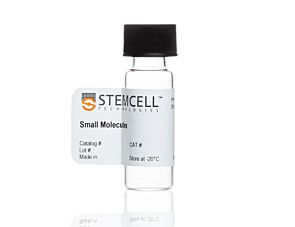
RHO/ROCK pathway inhibitor; Inhibits ROCK1 and ROCK2
Compatible antibodies for purity assessment of isolated cells
Robustly generate three-dimensional, patterned brain organoid cultures from human pluripotent stem cells without matrix embedding by using STEMdiff™ Midbrain Organoid Differentiation Kit. When paired with AggreWell™800™, this serum-free cell culture media can prevent organoid fusion and support the generation of over 500 organoids per kit for higher-powered statistical replicates and more detailed longitudinal study.
Adapted from protocols by Dr. Sergiu Paşca, the brain-region-specific organoids generated with this kit are three-dimensional in vitro models with a cellular composition and structural organization representative of the developing human midbrain. They are consistently sized with reproducible morphology between various cell lines, and provide a reliable model for the study of dopaminergic neurons within a functional 3D system.
Midbrain organoids can be combined with striatal organoids generated using the STEMdiff™ Dorsal Forebrain Organoid Differentiation Kit with additional patterning factors to generate midbrain-striatal AssemBloid™ cultures. Organoids can be maintained with STEMdiff™ Neural Organoid Maintenance Kit to support long-term culture survival (> 50 days) for predictive assays, high-throughput phenotypic screening, and neurotoxicity assays.
Subtype
Specialized Media
Cell Type
Neural Cells, PSC-Derived, Neural Stem and Progenitor Cells, Pluripotent Stem Cells
Application
Cell Culture, Characterization, Differentiation, Functional Assay, Immunofluorescence, Organoid Culture, Phenotyping, Spheroid Culture
Brand
STEMdiff
Area of Interest
Disease Modeling, Drug Discovery and Toxicity Testing, Neuroscience, Organoids
Formulation Category
Serum-Free
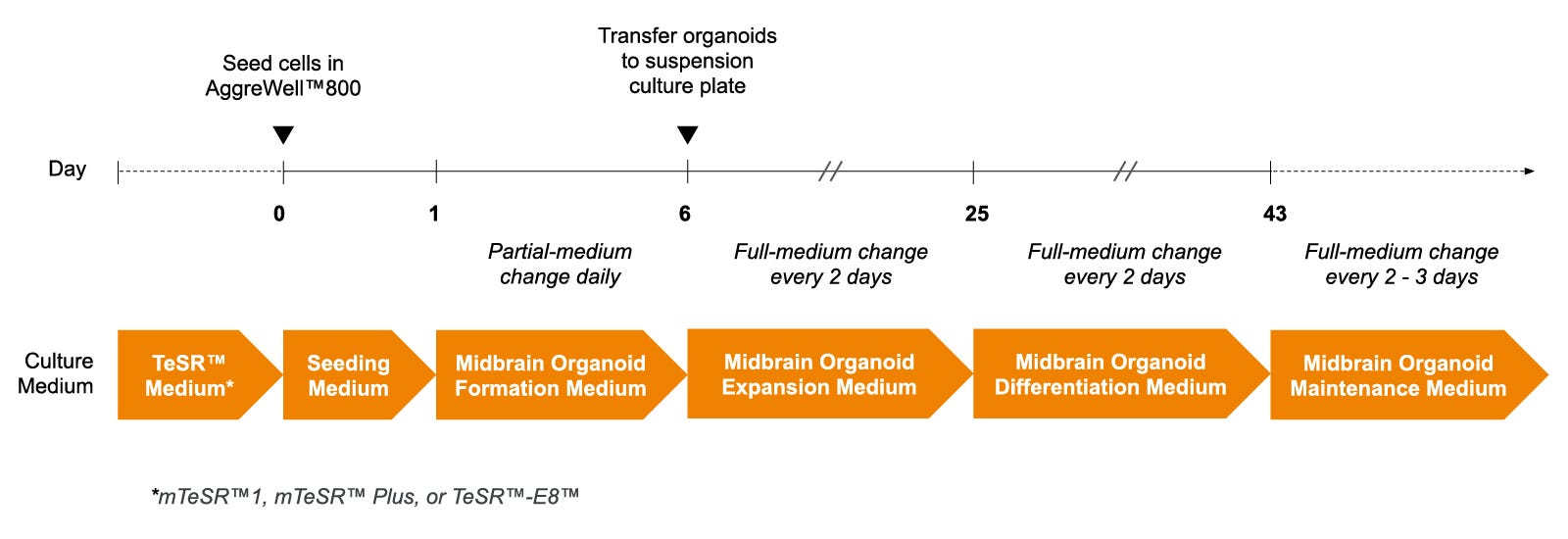
Figure 1. Schematic for the STEMdiff™ Midbrain Organoid Differentiation Kit
hPSC-derived midbrain organoids can be generated in 43 days. Organoids are initially formed in AggreWell™800 plates. After 6 days, the organoids are transferred and cultured in suspension, allowing growth and subsequent patterning to the midbrain. Long-term maintenance and further maturation of midbrain organoids can be achieved using STEMdiff™ Neural Organoid Maintenance Kit, see the Product Information Sheet (PIS) for details. hPSC = human pluripotent stem cell

Figure 2. Mature STEMdiff™ Midbrain Organoids Exhibit Brain-Region-Specific Marker Expression and Organization
Representative marker expression in Day 50 organoids produced using STEMdiff™ Midbrain Organoid Kits (left panels) is compared to organoids produced using STEMdiff™ Dorsal Forebrain Organoid Kits. (A) DAPI is used for counterstaining. (B) Midbrain organoids have comparatively less PAX6 expression throughout. Dorsal forebrain organoids exhibit elevated expression of dorsal cortical progenitor marker PAX6, organized radially. (C) Midbrain organoids have elevated expression of floorplate progenitor marker FOXA2 that arranges around pseudoventricular regions (see inset) and (D) marginal zone dopaminergic neuron marker GIRK2 that expands from FOXA2 expressing progenitor zones.

Figure 3. STEMdiff™ Midbrain Organoids Express Catecholaminergic Protein Tyrosine Hydroxylase
Midbrain organoids were generated from human ES cell line H7 and iPS cell line STiPS-F016 using STEMdiff™ Midbrain Organoid Differentiation Kit. Organoids were further matured to Day 50 with STEMdiff™ Neural Organoid Maintenance Kit and are compared to organoids generated with STEMdiff™ Dorsal Forebrain Organoid Differentiation Kit. Both guided organoid types generate neurons that express MAP2, but only midbrain organoids express the catecholaminergic neuron specific marker TH. ES cell = embryonic stem cell; iPS cell = induced pluripotent stem cell; TH = tyrosine hydroxylase

Figure 4. STEMdiff™ Midbrain Organoid Differentiation Kit Supports the Generation of Homogeneous, Reproducible Neural Organoids
(A-F) Representative phase contrast images of midbrain organoids derived from WLS-1C, H7, and STiPS-F016 hPS cell lines using STEMdiff™ Midbrain Organoid Differentiation Kit show uniform size and spherical morphology at Day 25 and Day 50 in vitro. (G) Diameter measurements of midbrain organoids demonstrate reproducibility across different cell lines (mean ± SD; Day 25, n = 21; Day 50, n = 26). hPS cell = human pluripotent stem cell

Figure 5. Neural Organoids Generated with STEMdiff™ Midbrain Organoid Kit Express Key Markers of Brain-Region-Specific Patterning
Single organoids differentiated from multiple cell lines were harvested for RNA at Day 25 and Day 50. ΔΔCT (Fold Change) of midbrain organoids is normalized to TBP and respective dorsal forebrain organoid control (A & B) or respective PSC control (C); mean ± SD, n = 3 - 15. (A) Midbrain floorplate precursor markers FOXA2, LMX1A, and EN1 were elevated in midbrain organoids at Day 25. (B) More mature marginal zone dopaminergic markers NURR1, TH, GIRK2, and PITX3 were elevated at Day 50. (C) Dorsal forebrain marker PAX6 and TBR1 expression is downregulated in Day 25 midbrain organoids. PSC = pluripotent stem cell
Find supporting information and directions for use in the Product Information Sheet or explore additional protocols below.
This product is designed for use in the following research area(s) as part of the highlighted workflow stage(s). Explore these workflows to learn more about the other products we offer to support each research area.
Thank you for your interest in IntestiCult™ Organoid Growth Medium (Human). Please provide us with your contact information and your local representative will contact you with a customized quote. Where appropriate, they can also assist you with a(n):
Estimated delivery time for your area
Product sample or exclusive offer
In-lab demonstration
扫描二维码或搜索微信号STEMCELLTech,即可关注我们的微信平台,第一时间接收丰富的技术资源和最新的活动信息。
如您有任何问题,欢迎发消息给STEMCELLTech微信公众平台,或与我们通过电话/邮件联系:400 885 9050 INFO.CN@STEMCELL.COM。

